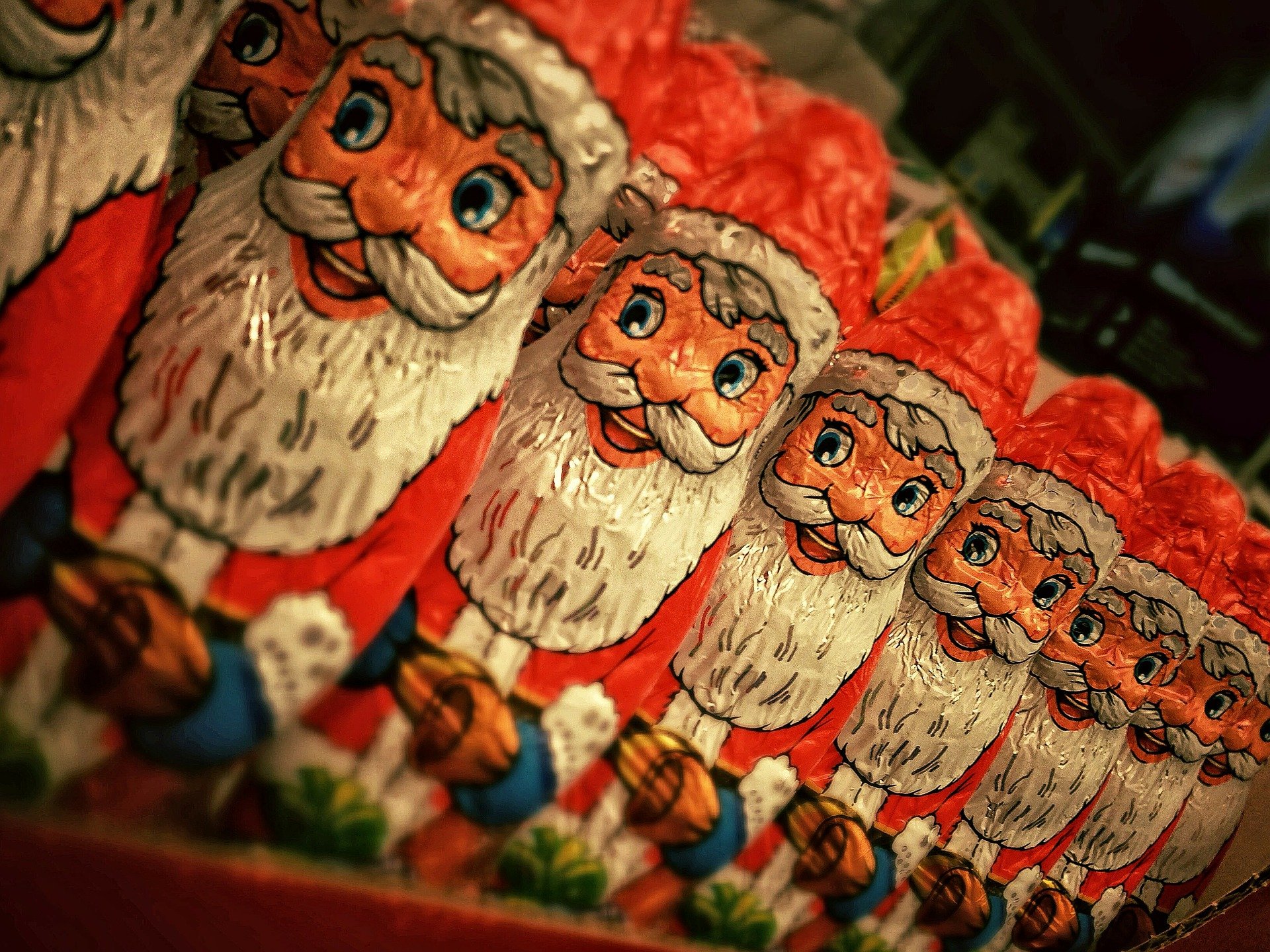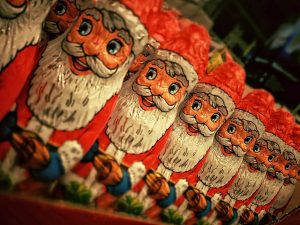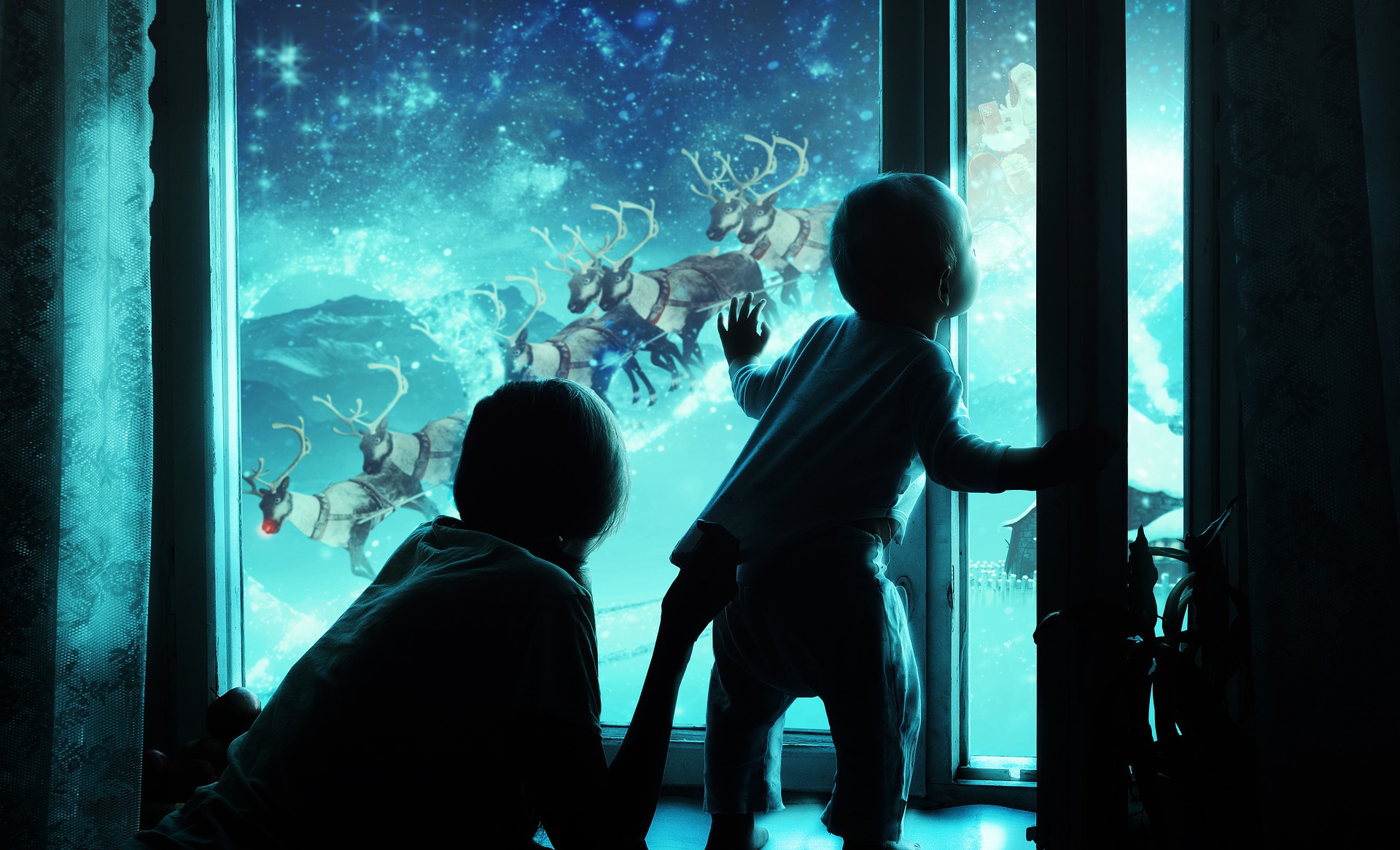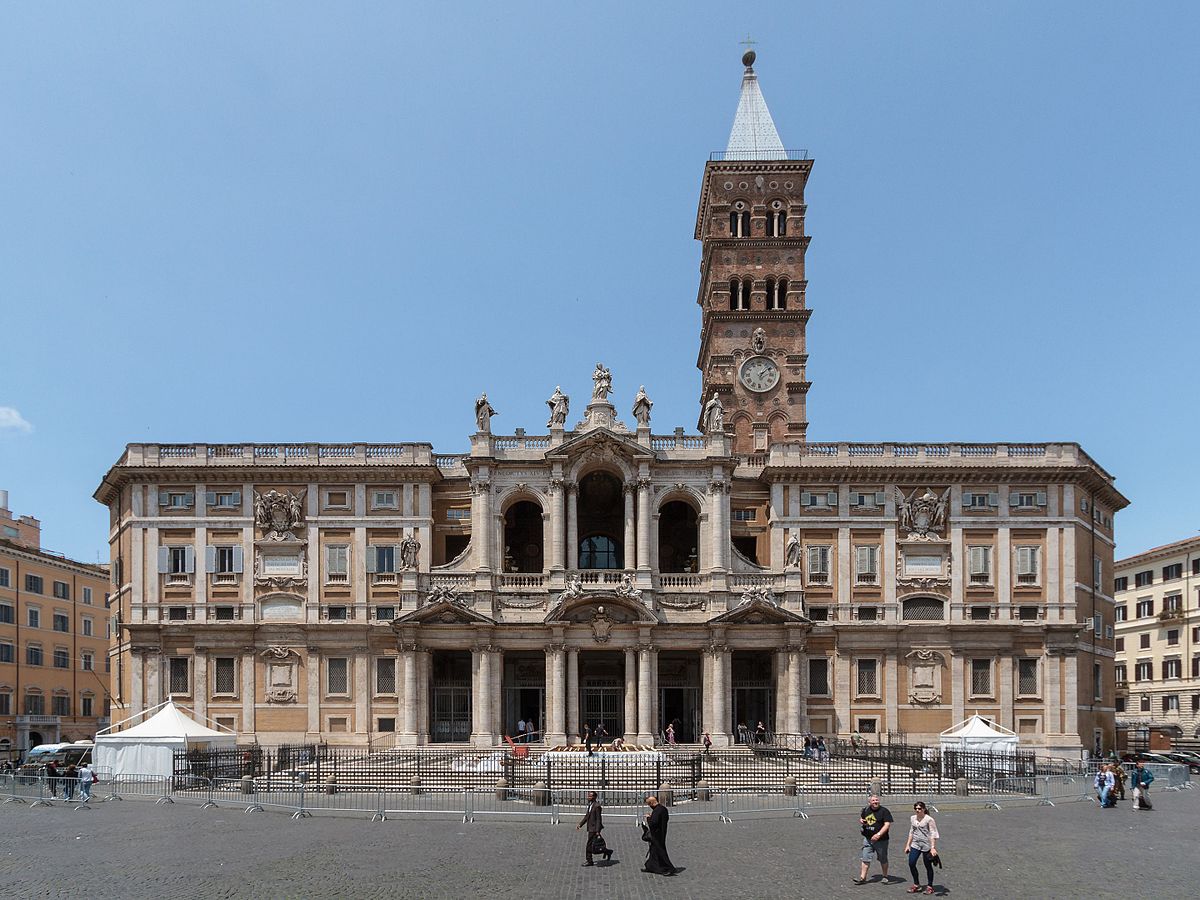Home>Christian Resources>Is Santa Real? Truths and Lies


Christian Resources
Is Santa Real? Truths and Lies
Modified: January 9, 2024
Jason DeRose, Managing Editor at Christian.net, uses his expertise in religion and journalism to deepen understanding of faith's societal impacts. His editorial leadership, coupled with a strong academic background, enriches the platform’s diverse content, earning him recognition in both journalism and religious circles.
Is Santa real? Do you believe in his existence? Here are the stories, myths, and historical facts you should know about Santa!
(Many of the links in this article redirect to a specific reviewed product. Your purchase of these products through affiliate links helps to generate commission for Christian.net, at no extra cost. Learn more)
Portly, jolly, and merry – Christmas means Santa is coming with a bag filled with exciting gifts! He travels the skies with his reindeers assisting him with pulling his grand sleigh. He comes at night, appears on rooftops, and if you’re lucky enough, you might just be able to witness Santa leaving his presents under the Christmas tree. And as Santa leaves on his sleigh, you’ll hear his famous line, “Ho, ho, ho! Merry Christmas!”. While this story might sound familiar to you as a kid, one cannot help to ask the big question: Is Santa real? The short answer is yes and no. Santa is real but, not really.
Who Is Santa Claus?
For someone or something to be real, they have to exist or have existed, right? This is a given. So, by asking “is Santa real?”, we also ask “did Santa even exist?” – The answer is yes, he did exist. Santa takes on many names such as St. Nick, St. Nicholas of the North Pole, Kris Kringle, and even Father Christmas. This is because the image we now associate with the icon for Christmas is based on an actual person named Nicholas of Myra.
The real Santa Claus was born around 280 A.D. in Patara, an area near Myra in modern-day Turkey. St. Nicholas of Myra was an esteemed Christian monk. Like the Christmas figures and symbols we associate with generosity, he was known for many good things like secretly donating money to save young girls from prostitution, aiding sailors from mischief, and healing people from diseases. He was able to perform many miracles, thus, allowing him to qualify as an officiated saint.
Though his death remains unknown, both the Catholic and Eastern Orthodox churches celebrate the sixth day of December as his date of passing. This tradition has been practiced for more than 1,000 years (Take note because this will later contribute to how he became Santa Claus!). During the Renaissance period, St. Nicholas was the most popular saint in Europe for the many contributions under his name. Even after the Protestant Reformation, he still maintained his estimable reputation, especially in Holland.
Summarizing Santa’s Identity
The Santa we know today is partially based on St. Nicholas of Myra who wasn’t a big-bodied, bearded man carrying gifts. But, instead, he is the patron saint of sailors, children, wolves, and pawnbrokers. He is also a great figure representing kindness, selflessness, and generosity. To answer “is Santa real?”, based on historical data, yes, he is real. This festive icon for Christmas is based on an actual person and not only through traditional oral folklores or literary figures.

Read more: Couple Who Lied To Apostles
How did St. Nicholas Become Santa?
If St. Nicholas is the real Santa, then, can he fly and travel down chimneys? Is it true that he lists and categorizes the naughty and nice in his toy factory? While these do make a gleeful image of Christmas, they are only man-made narratives to spread the warm Christmas vibe. It is true that Santa exists through the life of St. Nicholas, but the magical traits he possesses according to pop culture aren’t.
During the Middle Ages, parts of St. Nicholas’ skeleton were found in Italy which proved his existence. However, they were stolen by Italian merchants in 1087. As a result, his fame in Europe began. The popularization of St. Nicholas as Santa Claus began in Northern Europe where the saint’s story was incorporated with Teutonic folktales. The Teutons are people from an ancient tribe as mentioned by Roman authors. They incorporated his story with elves and sky-chariots. This is also where the tall, white-bearded man narrative was given to St. Nicholas.
Later, when the Dutch adapted the circulating stories of the saint, they translated his name to “Sinterklaas”. This is a more Dutch-friendly take on St. Nicholas of Myra which is harder to pronounce. For years, they practiced the veneration of “Sinterklaas” every December 6. Years later, St. Nicholas of Myra soon became “Santa Claus” when Americans adapted the name “Sinterklaas” with their own twist, making his name Santa Claus.
Santa Conquers America
From Europe, how did he even reach America? and where does it say that Santa has reindeers and a red robe? If the answer is yes to “Is Santa real”, does it mean that Rudolf the reindeer is also real? That’s a lot of questions with only one answer – media.
To serve a little background, the first newspaper in America was published in 1690. After this, people embraced the new outlet for information and entertainment. The year 1774 is a historical year for Santa Claus and the Christmas season. It was the year where an American newspaper reported how and why Dutch families celebrated during December 6, the death of St. Nicholas or “Sinterklaas” (Take note that during this time, the name “Sinterklaas” was more popular than St. Nicholas). This was the first exposure of Santa Claus in America.
Years later, Washington Irving published “The History of New York” in 1809. This literary classic features the story of Sinterklaas and even named St. Nicholas as the patron of New York. From here, many writers, artists, and big figures of entertainment slowly adapted the story of Sinterklaas until he peaked as the icon of Christmas known as “Santa Claus”.

Santa Claus: Truths and Lies
Now having a background on the man behind Santa Claus, let us debunk the different myths and facts around the origins of Santa. Although the practice of making him a Christmas icon varies from culture, there are some universal assumptions about the man carrying a belly full of jolly that just cannot coincide with his origins.
Can Santa Fly?
This question is similar to “is Santa real?” – the answer is both a yes and a no. If we are talking about the real Santa who is St. Nicholas of Myra, then, the answer is no. Humans cannot fly and his existence is not fiction. But, if we are talking about the popularized version of St. Nick or Santa, then, yes.
The description of him being able to take flight with his reindeers originates in the American take of the festive figure. The Dutch or the original version of the story of Sinterklaas did not include any flying abilities or power. In fact, Sinterklaas simply walked and left gifts outside children’s homes. Also, the Dutch did not promise Santa as someone who gives gifts consistently. Their version includes Santa leaving lumps of charcoal if you weren’t so nice throughout the year! Yikes!
Read more: Why Would The Apostles Die For A Lie
Why does Santa Give Presents?
The idea of Christmas being incorporated with exchanging presents was not a “thing” before the popularization of Santa Claus. St. Nicholas was simply an icon of generosity and selflessness against oppression in the past. He never represented gift-giving (or even Christmas at some point). There’s actually no written record of the monk handing out presents to people. But, why do people associate Christmas with shopping?
This all changed in the 1800s when shopping walls advertised their Christmas sales with Santa Claus. Malls welcomed the season with posters of Santa giving gifts to their loved ones which encouraged shopping. This is also where the ever-famous “sit on Santa’s lap” began as kids loved the idea of meeting him in person with flashy props and costumes.
If you ever encounter people dressed up as Santa, this is all thanks to the Salvation Army in the 1890s. To solicit money for free Christmas meals, they let unemployed men dress up as Santa Claus, parading the streets to capture the public’s attention – and guess what? It worked! Since then, people love to hire talents to dress up as the Christmas icon for parties, dinners, and fundraising events. We can say that the tradition and representation we have for Santa are all written by creative, corporate minds.

Are Santa’s Reindeers Real?
“Rudolph the Red-Nosed Reindeer had a very shiny nose and if you ever saw it, you would even say it glows” – Everyone’s familiar with this classic when they were younger. But, did you know that the original story-poem had a lot to do with marketing instead of Christmas itself?
Robert L. May was a copywriter at the Montgomery Ward department store. At the time, holiday-themed items were a hit. So, the copywriter wrote a story-poem with a Christmas theme and added eight characters which are reindeers. These majestic animals were in charge of accompanying Santa Claus as he ventured through the Christmas air.
Rudolph is the center of the story. The other deers teased young Rudolph as he had a large, red nose that glows! Feeling bad for himself, one night, Santa struggled as Christmas Eve became foggy. Rudolph comes in to save the day with his glowing nose as a source of light and direction. Just like any famous Christmas tradition, Rudolph and the seven other deers are fictional characters.
Specifically, these characters were made by the author to entice more customers in purchasing in the department store he was working for. After this, the poem inspired visual artists, advertising heads, and even musicians to include Rudolph in Christmas-inspired merchandise.
Choosing What And What Not To Say
Answering “is Santa real?” can never have a universal answer that fits every household perfectly. However, we can always choose what and what not to include when we’re talking about Santa. There are some pros and cons we need to consider before incorporating Santa as our mascot for the season:
The Pros
- Believing in Santa expands a person’s imagination and creativity. This helps them envision and feel the spirit of Christmas better. Of course, we cannot deny that all Christmas-themed stories and artwork reveal great moral lessons of generosity, family bonding, and thanksgiving.
- Especially for children, believing in Santa helps them distinguish Christmas from other annual holidays. Unlike other seasons, no figure is as prominent as Santa in pop culture. Therefore, this triggers them to differentiate the season from New Year, birthdays, and other events.
- It adds to the spirit of Christmas! From the Santa-inspired songs and decorations to the red outfits and sugar cookies shaped as Rudolph, having a figure made especially for Christmas makes it more jolly than it already is.
- For children, learning about St. Nicholas is a fun introduction in boosting their foundation for Christianity. His story is interesting and inspiring. Children can’t resist not knowing who the real Santa is and how his Christian values made him the iconic figure for the happiest day of the year.
Read more: Is Hell Real Or Is It A Myth?
The Cons
- The image of Santa Claus is man-made. The magical descriptions hanging in the figure are made by great writers and artists. The Bible does not have any accounts for a similar figure. Basically, Santa is just a fictional icon based on a real person.
- For parents to their children, believing in Santa allows them to thank him for the gifts instead of their parents. While it does stimulate imagination, parents might not be given enough credits for their efforts in purchasing and packing gifts.
- It might frustrate children when they learn the truth about Santa and how he’s a product of marketing and media. If presented wrongly, they might miss the point of Christmas being about Jesus.

The Bottomline
So, is Santa real? What if you choose not to oppose nor agree to his existence? Don’t worry, there is a fine line that you can opt for. Let’s break it down; Santa is real if we are going to count his existence based on history. He is real because he is based on St. Nicholas of Myra who is real. In fact, his bones were found as key evidence of his existence. So yes, he is very real.
But, what makes him “not real” is when we count the added magical descriptions and abilities he has. No, Santa does not live in the North Pole (because St. Myra is from Turkey), he does not fly with reindeers (this is written for marketing purposes), he cannot list down who is naughty and nice (St. Nick is as human as we all are) and of course, we do not celebrate for him but for Jesus Christ.
What we can take from the man-made products of Santa is the lesson. The story of Rudolph tells us to not feel insecure because we all serve a unique purpose, Santa and his list teach us that our good deeds come with a reward although not from him but from God, and his stories encourage us to give from the heart because after all, there are so many things to thank God for on Christmas!












